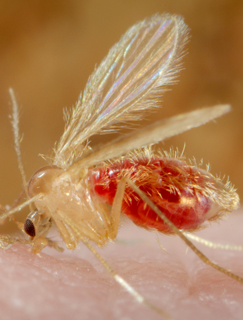Leishmaniasis on the increase – Epidemiology Unit
With several cases of Leishmaniasis recently being reported in different parts of the Island, the Epidemiology Unit has warned that patients showing symptoms should immediately seek medical attention to avoid complications.
“If the infected person has not sought treatment it can last for many months. Very few may heal spontaneously over months to years, leaving an ugly scar”, Consultant Epidemiologist, Epidemiology Unit, Ministry of Health and Indigenous Medical Services, Dr. Manjula Kariyawasam told the Sunday Observer.
Replying to our query as to what this little known although common disease was and how it was caused, he said, “Leishmaniasis is a vector-borne parasitic disease. This parasite is named as Leishmania. It transmits through the bite of an infected female sandfly. Cutaneous leishmaniasis (CL) is the most common form of leishmaniasis which causes skin lesions, mainly ulcers, on exposed parts of the body, leaving life-long scars and disability which may cause stigma. The earlier the treatment the more chances of minimising life long scars on the skin”, he urged patients living in high risk areas.
Nearly four-thousand cases have been reported to the Epidemiology Unit during 2019 alone. Five districts namely, Anuradhapura, Polonnaruwa, Kurunegala, Hambantota and Matara are contributing to approximately 90% of the total annual caseload. In addition, Matale, Kegalle and Gampaha have been showing an increasing number of cases during the past two years. However, it has been revealed that although a majority of the cases are reported from the dry zone, some districts in the intermediate and wet zone are also reporting cases,” he added.
Asked how one could minimise exposure to the insect he said that keeping the immediate environment clean was the best way to start.
“Breeding sites and outdoor resting places of the sandfly can be eliminated by keeping the outdoor environment clean. Therefore, avoid unnecessary vegetation. Allow sunlight to fall and provide adequate air movement by removing unnecessary items such as shady tree branches, broken parts/ debris near houses. Avoid garbage dumping and decaying items near houses and control rodent habitats. Avoid growing shady trees, bushes closer to animal shelters. Clean the animal shelters by removing animal waste regularly and keep shelters dry,” he advised.
Wearing protective clothing and sleeping under bed nets impregnated with pyrethroid-containing insecticides, would also be helpful, he added.
****
Current weather pattern could lead to dengue outbreak
 Around 105,049 suspected dengue cases for the year 2019 and 21,649 suspected dengue cases from January 2020 to up to now (June 26 ) were reported to the Epidemiology Unit from all over the island. Approximately 28.3 % of the dengue cases were reported from the Western Province. The highest numbers of dengue cases were reported during the 29th week of 2017.
Around 105,049 suspected dengue cases for the year 2019 and 21,649 suspected dengue cases from January 2020 to up to now (June 26 ) were reported to the Epidemiology Unit from all over the island. Approximately 28.3 % of the dengue cases were reported from the Western Province. The highest numbers of dengue cases were reported during the 29th week of 2017.
In June alone (up to 26) there were 1,218 suspected cases reported from all over the island. Kandy showed the highest number of suspected cases in June ( 293 ) followed by Colombo ( 191) and Kalutara ( 153).
The Municipal Council Colombo recorded 73 cases and other areas in Colombo 191.
Health sources said although extensive and regular removal of possible mosquito breeding sites from the environment, along with strengthened patient education on the management of fever had resulted in a relatively low mortality, it was important for the public to cooperate with the health authorities and keep their environment clean and free from mosquito attracting containers. .
“It is very important to seek medical attention in the event of fever and do relevant laboratory investigations at least by day three of the illness,” health sources advised.
